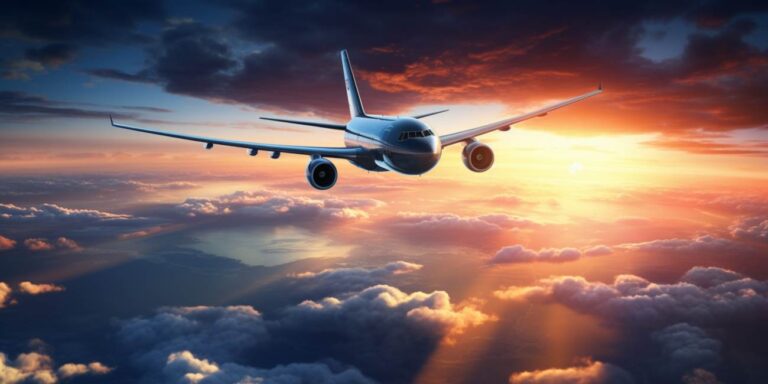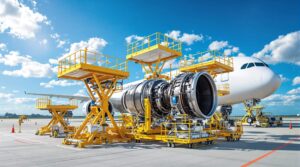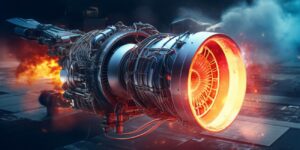At its core, aircraft endurance is the duration an aircraft can stay in flight without refueling. It’s a critical metric for various aviation scenarios, ranging from long-haul commercial flights to military operations requiring extended airtime. Understanding aircraft endurance involves unraveling the intricate interplay of several factors that influence a plane’s stay in the vast expanse of the atmosphere.
One of the primary determinants of aircraft endurance is the fuel efficiency of the aircraft. Efficient engines, advanced propulsion systems, and aerodynamic design contribute to maximizing the endurance by ensuring optimal fuel consumption. Aircraft engineers meticulously design wings, fuselage, and engines to strike a harmonious balance between lift, drag, and fuel economy, thereby enhancing the aircraft’s ability to linger in the skies.
The aircraft’s fuel capacity plays a pivotal role in shaping its endurance. Larger fuel tanks enable planes to carry more fuel, extending their range and endurance. However, the trade-off lies in the increased weight, affecting the overall efficiency. Engineers engage in a delicate dance of balancing fuel capacity and weight to achieve the optimal endurance without compromising performance.
Another crucial factor influencing aircraft endurance is the mission profile. Commercial airliners embarking on transoceanic journeys have different endurance requirements compared to military aircraft conducting surveillance or reconnaissance missions. Tailoring the aircraft’s design and fuel capacity to meet specific mission objectives is essential for optimizing endurance.
The evolution of aviation technology has witnessed groundbreaking developments in electric and hybrid propulsion systems, redefining the boundaries of aircraft endurance. Electric aircraft, powered by batteries, aim to revolutionize the industry by offering sustainable and efficient alternatives. These innovations challenge conventional notions of endurance as the aviation landscape embraces eco-friendly solutions.
Increasing aircraft endurance range with efficient engines
Efforts to enhance aircraft endurance range have been at the forefront of aerospace engineering, with a key focus on developing efficient engines that redefine the boundaries of flight capabilities. The quest for extended flight durations without compromising performance has led to groundbreaking innovations in propulsion systems.
The cornerstone of this pursuit lies in the development of next-generation engines that harness advanced technologies. These engines leverage cutting-edge materials, aerodynamic designs, and combustion techniques to achieve optimal fuel efficiency and power generation. The integration of lightweight materials, such as advanced composites and alloys, contributes to a reduction in overall weight, further enhancing the aircraft’s endurance range.
A pivotal aspect of the quest for increased endurance is the utilization of high-bypass turbofan engines. These engines boast a higher ratio of bypass air to core airflow, resulting in improved fuel efficiency. The increased bypass ratio enables the engine to generate thrust more efficiently, thereby extending the aircraft’s range. This technological leap has become a cornerstone in the development of modern long-range aircraft.
The advent of open-rotor propulsion represents another stride towards achieving unparalleled endurance. Open-rotor engines, also known as unducted fans, feature exposed blades that operate outside a traditional engine casing. This design minimizes drag and enhances propulsive efficiency, translating to increased range capabilities. The incorporation of open-rotor technology in aircraft promises to reshape the landscape of long-haul travel.
The significance of advanced fuel technologies cannot be overstated in the pursuit of increased endurance. Biofuels, synthetic fuels, and hydrogen propulsion systems are emerging as viable alternatives to traditional aviation fuels. These eco-friendly options not only reduce the environmental impact but also contribute to the development of engines with extended endurance capabilities. The aviation industry is witnessing a paradigm shift towards sustainable fuel sources to propel the next generation of aircraft.
The importance of adaptive propulsion systems is highlighted in optimizing endurance under varying flight conditions. These systems dynamically adjust engine parameters based on factors such as altitude, temperature, and airspeed, ensuring optimal performance throughout the flight. The integration of artificial intelligence in these systems further refines their responsiveness, paving the way for unprecedented endurance ranges.
To illustrate the impact of these advancements, consider a comparative analysis of aircraft models with and without the latest efficient engines. A table can succinctly present key performance metrics, including fuel consumption per nautical mile, maximum range, and cruising speed. This comparison serves as a visual testament to the transformative power of efficient engines in pushing the boundaries of aircraft endurance.
Maximizing aircraft fuel capacity for extended flights
When it comes to maximizing aircraft fuel capacity for extended flights, aviation engineers and designers delve into a complex world of aerodynamics, materials science, and precision engineering. The key to pushing the boundaries of fuel tanks lies not only in increasing their physical size but also in optimizing their design to enhance overall efficiency.
The capacity of fuel tanks directly correlates with an aircraft’s range, influencing how far it can travel without refueling. In the pursuit of extended flight times and greater distance coverage, manufacturers focus on innovative ways to augment fuel storage without compromising safety or performance.
One crucial aspect is the choice of materials. Advanced composite materials, known for their strength-to-weight ratio, have become the go-to option for constructing fuel tanks. These materials not only contribute to the structural integrity of the aircraft but also allow for more creative and space-efficient tank designs, optimizing capacity.
Engineers also employ ingenious methods such as reshaping the wings to accommodate larger fuel tanks without significantly altering the aerodynamics. By integrating the fuel tank design with the overall aircraft structure, they can ensure a harmonious balance between capacity and performance.
Beyond structural considerations, the management of fuel distribution during flight plays a pivotal role. Advanced fuel systems with precise sensors and automated controls allow for optimal utilization of the available capacity, ensuring that the aircraft remains balanced and stable throughout the journey.
Efficiency is the name of the game when it comes to maximizing flight time and distance. Aircraft designers leverage cutting-edge technologies to reduce fuel consumption, from aerodynamic improvements to the use of more fuel-efficient engines. These innovations not only extend flight time but also increase the achievable distance on a single tank of fuel.
It’s worth noting that while the focus is on increasing fuel tank capacity, there’s a delicate balance to maintain. Excessive weight from larger tanks could offset the gains achieved in extended flight time and distance. Engineers meticulously calculate and optimize every aspect to ensure the aircraft’s overall performance remains optimal.
Aircraft endurance factors like aerodynamics and weight
The aerodynamic design of an aircraft plays a pivotal role in determining its endurance during flight. The sleek and streamlined shape allows the aircraft to efficiently navigate through the air, minimizing wind resistance and optimizing fuel efficiency. Engineers meticulously craft the wings, fuselage, and other components to ensure that the aircraft cuts through the air seamlessly, reducing drag and enhancing overall performance.
When it comes to weight, every ounce matters in aviation. The principle of “lighter is better” holds true as a lighter aircraft requires less energy to stay airborne. Pilots and engineers constantly strive to find innovative ways to reduce the weight of both the aircraft structure and its components. This focus on keeping the aircraft light directly contributes to increased fuel efficiency and extended endurance in the air.
Understanding the intricate relationship between weight and aerodynamics is crucial. The aircraft’s weight influences its ability to ascend, descend, and maintain stable flight. Achieving an optimal balance ensures that the aircraft responds effectively to control inputs, further enhancing its overall endurance and performance.
Moreover, advancements in materials technology play a significant role in crafting aircraft with both superior aerodynamic properties and reduced weight. Composite materials, known for their strength-to-weight ratio, are increasingly employed in modern aircraft construction. These materials contribute to making the aircraft both robust and light, addressing the dual requirements of structural integrity and weight reduction.
Wind, a formidable force in aviation, can either boost or impede an aircraft’s endurance. Pilots skillfully utilize tailwinds to increase groundspeed and conserve fuel, effectively extending the aircraft’s range. Conversely, battling headwinds demands more power and fuel consumption. Thus, strategic flight planning, considering prevailing winds, becomes essential to optimize endurance and fuel efficiency.






